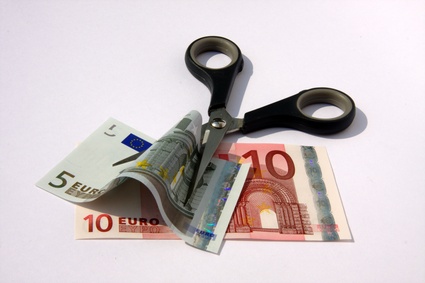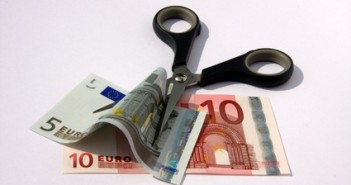Mario Draghi’s second rate decision will likely consist of his second rate cut in a row. There are expectations for additional measures such as easing collateral rules and extending loans to banks.
While all these steps are necessary and helpful in the current situation, they will likely be too little and too late for helping the euro-zone. Will the ECB make its quantum policy leap? Preview.
See live blog of press conference here.
Deteriorating Conditions
Italy’s Mario Draghi is acting as the president of the ECB since November 1st. These weeks have been very busy. His first rate decision was to reverse the July hike made by his predecessor, Jean-Claude Trichet and cut the interest rate back to 1.25%, a 25 basis point cut.
Draghi later cooperated with the Federal Reserve and 4 other central banks in cutting the dollar swap rate. This sure helps the struggling banks: no less than 34 banks tapped the long term dollar liquidity. It reached $50 billion.
All these monetary easing steps come despite the high inflation, which stubbornly remains at 3%. It’s not only the banks that are struggling, but also the real economies. Recent purchasing managers’ indices have shown that the euro-zone is likely contracting in Q4. Draghi already acknowledged a “mild recession” in his previous statement.
Helping the Economy
All this leads to a very high chance of another rate cut, reversing the hike made in April and returning the interest rate to 1.00%, the place where it stood for a long time.
There is talk about a bigger rate cut, to new historic levels. This is unlikely as the ECB doesn’t tend to move hastily and will likely prefer to keep this ammunition dry for another leg down, which will likely happen.
A rate cut can ease the situation in the euro-zone economies by making lending cheaper. The cut also serves to push off pressure for the real thing (discussed below).
Helping the Banks
Regarding the banks, the fresh data that came out of the ECB shows how banks can’t access dollars, can’t access other banks, and in Greece’s case, can’t access retail deposits.
So, Draghi and his associates will likely announce easier rules for collateral – the central bank may accept paper deemed worthless by the markets.
In addition, the long term lending it provides the banks could become even longer – extended from 13 months to two or three years, with “full allotment” – practically no limits.
Not Saving the Day
All these moves will put some oil in the engines of the euro-zone, but it doesn’t solve the real problem: unsustainability of debt, especially Italian debt. It is clear that the current EFSF mechanism cannot be easily leveraged and that moving forward with the ESM is too complicated.
In the meantime, recycling loans for Italy (and also Spain) becomes too expensive, and may turn a liquidity problem into a solvency problem. Politicians are much slower than the markets and time is running out.
The only factor that can move fast is the ECB, by buying bonds en masse. The current SMP program is limited – it only keeps the yields from exploding, but doesn’t return them to sustainable levels. The bond rout spread across the continent, and even reached Germany, which is not such a safe haven anymore.
Enhancing the bond buys means printing money, with a US/UK style quantitative easing program. A QE program can also lower the value of the the euro, and this can help exports and tourism in the euro-zone.
It may also trigger inflation, but inflation isn’t the main fear in the current situation.
Fear of Moral Hazard
Fully monetizing debt is what worries the ECB, and especially its prominent German member, the Bundesbank’s president Jens Weidmann. Printing money will discourage governments from keeping their budgets in order – moral hazard.
In order for the ECB to act, it needs to know that governments are taking the necessary steps (necessary according to the ECB) for balancing themselves. The ECB already dictated measures to the Italian government.
Recent signs have shown that the ECB is getting closer to such a big move, but the chances of this happening at a really large scale and at the ECB meeting are quite low.
Draghi is set to meet German Chancellor Angela Merkel and French president Nicolas Sarkozy on Thursday evening. The rate decision is at noon. This timetable means that such an announcement isn’t likely at the press conference.
EUR/USD
The rate decision will be published at 12:45 GMT. A cut of 0.25% will probably leave the pair at its range. A bigger cut will send it lower, but the chances are very low. No rate cut will be a big surprise and will not help the euro at the current state of affairs.
The press conference is held at 13:30 GMT. Draghi is expected to explain the decision and announce more steps.
The euro will move according to updated economic forecasts and the details of the announcement.
Stay tuned for a live blog of the ECB press conference by Mario Draghi.
For more on the euro, see the EUR/USD forecast.
